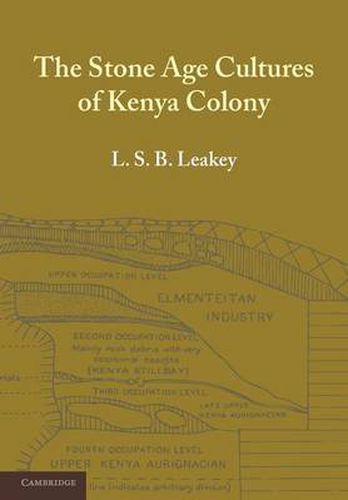Readings Newsletter
Become a Readings Member to make your shopping experience even easier.
Sign in or sign up for free!
You’re not far away from qualifying for FREE standard shipping within Australia
You’ve qualified for FREE standard shipping within Australia
The cart is loading…






Louis Seymour Bazett Leakey (1903-72) was a British archaeologist, naturalist and palaeoanthropologist who made a significant contribution to the study of human evolutionary development. First published in 1931, this work presents the results of two periods of excavation by the East African Archaeological Expedition during 1926-7 and 1928-9. As noted in the preface, the findings of these excavations enabled the Expedition ‘to work out a number of clear subdivisions in Pleistocene and recent times, based upon climatic changes, and to establish in most cases the relation of the cultures found to these time divisions.’ The text contains numerous illustrative figures, including original drawings and photographs. Numerous appendices are also included. This book will be of value to anyone with an interest in archaeology, anthropology and East Africa.
$9.00 standard shipping within Australia
FREE standard shipping within Australia for orders over $100.00
Express & International shipping calculated at checkout
Louis Seymour Bazett Leakey (1903-72) was a British archaeologist, naturalist and palaeoanthropologist who made a significant contribution to the study of human evolutionary development. First published in 1931, this work presents the results of two periods of excavation by the East African Archaeological Expedition during 1926-7 and 1928-9. As noted in the preface, the findings of these excavations enabled the Expedition ‘to work out a number of clear subdivisions in Pleistocene and recent times, based upon climatic changes, and to establish in most cases the relation of the cultures found to these time divisions.’ The text contains numerous illustrative figures, including original drawings and photographs. Numerous appendices are also included. This book will be of value to anyone with an interest in archaeology, anthropology and East Africa.